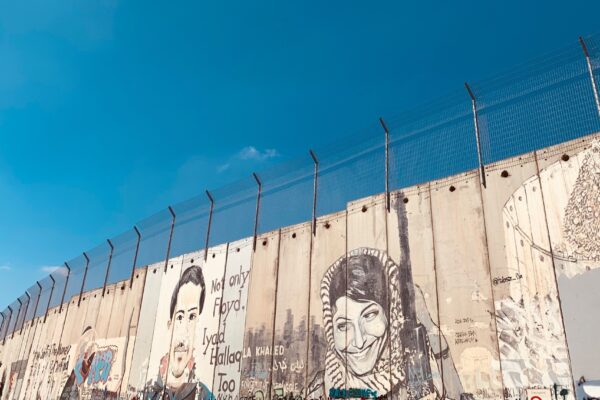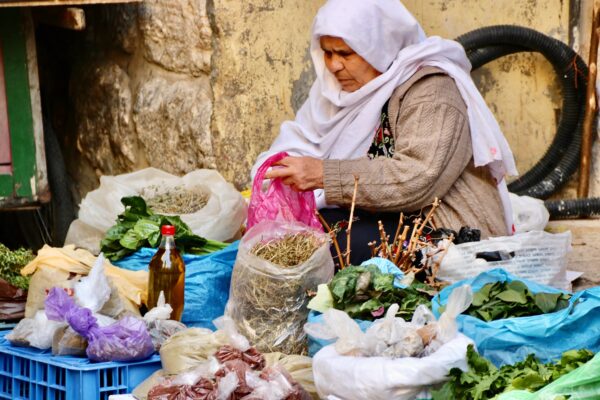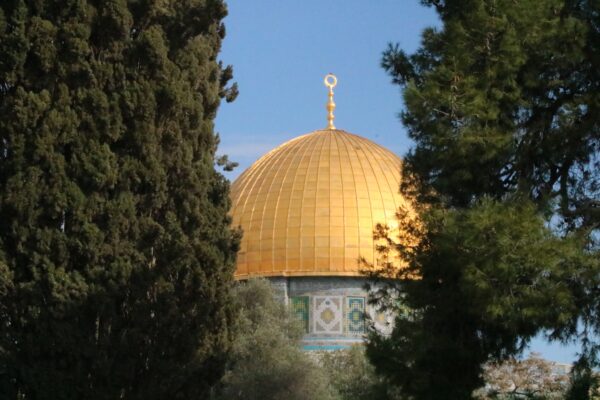Memorials to the Khmer Rouge’s many victims are dotted around the city, reminding visitors of the country’s brutal and tragic recent history, with their presence making Phnom Penh’s revival all the more remarkable when you consider that the city was forcibly depopulated and allowed to crumble during the Khmer Rouge era.
Memorials to the Khmer Rouge’s many victims are dotted around the city, reminding visitors of the country’s brutal and tragic recent history, with their presence making Phnom Penh’s revival all the more remarkable when you consider that the city was forcibly depopulated and allowed to crumble during the Khmer Rouge era.
The land-locked country of Laos is often forgotten when thinking of Indochina’s infamous and at times gruesome past, with neighbouring Cambodia more in peoples’ minds with its turbulent history as well. Travelling through one of Asia’s least-known lands, Nabeel Shariff discovers there is more to these two countries than just fallen regimes.
Discovering Cambodia
My Cambodian journey started in the modern capital, Phnom Penh. Located on the Mekong River, the city was once known as the ‘Pearl of Asia’ or ‘Paris of the East’, with its beautiful French-built edifices and boulevards. Sadly, the ravages of the Vietnam War and the Khmer Rouge regime led to the capital’s decline for many years, but with international assistance and investment, reconstruction has begun apace and the city is attempting to regain its former glory.
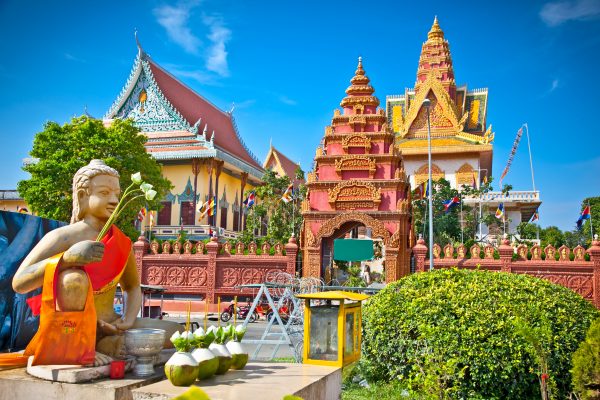
Memorials to the Khmer Rouge’s many victims are dotted around the city, reminding visitors of the country’s brutal and tragic recent history, and their presence makes Phnom Penh’s revival all the more remarkable when you consider that the city was forcibly depopulated and allowed to crumble during the Khmer Rouge era, with reconstruction only beginning in the early 1980s after it was liberated by Vietnamese forces.
Today, Phnom Penh is chaotic yet edgy, and a destination for travellers looking to experience something a bit different. Scenes where Khmer Rouge atrocities once occurred are now vibrant streets crowded with the new youth of the city, mingling amongst upmarket French and Japanese restaurants.
Perhaps the most poignant part of a trip to Phnom Penh is a visit to the nearby Killing Fields, one of a number of sites around the country where up to 1.7 million people were killed and buried in mass graves by the Khmer Rouge regime. There are a number of harrowing tales to be recounted here, and I was told about how victims were forced to dig their own graves before they were thrown in and buried alive.
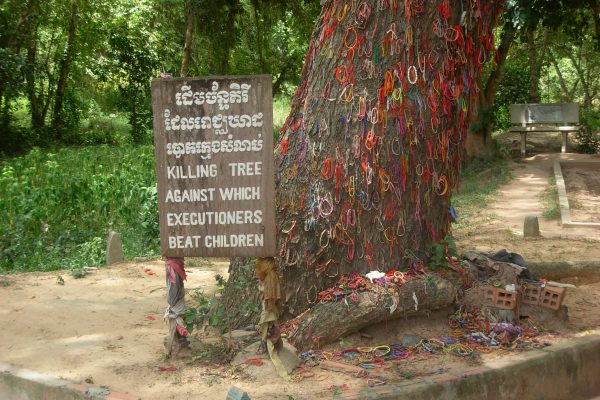
Whilst it is markedly morbid, it is a stark reminder that less than fifty years ago millions of humans were persecuted in ways unimaginable to most. Today, the best known memorial is to be found in the village of Cheoung Ek, where a park and Buddhist monument commemorate the victims, amongst them ethnic Vietnamese, Thai, Chinese, Chams (Cambodian Muslims), Christians, and Buddhist monks.
Islam in Cambodia is practiced by an ethnic group known as the Chams, whose ancestors reportedly migrated from Borneo before the 2nd century AD. At its height in the 12th century, the Kingdom of Champa stretched from modern day Huế in Central Vietman to the Mekong Delta in the south, and it was around this time that Arab traders would stop along the coast on their way to China, bringing with them Sunni Islam.
Hundreds of years later, almost half of Cambodia’s Chams (including dozens of imams) were executed and nearly all of the mosques were tragically destroyed. The Khmer Rouge wanted to enforce their version of equality, and Muslims stood out with a different language, customs, diet and rules. Today, the majority of Cambodia’s Muslims practice Sunni Islam, as well as in neighbouring Laos where some managed to escape from the Khmer Rouge.
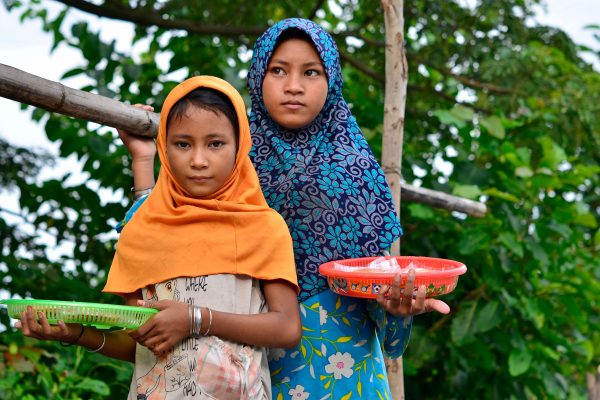
The Chams are a tiny but significant minority, and both Cambodia and Laos have small Muslim populations in comparison to neighbouring Thailand and Vietnam. With many Cambodian Muslims migrating to Phnom Penh and Siem Reap, there are a handful of mosques such as the Jamiul Azhar Mosque, and Muslim-owned businesses in the main cities.
Away from Phnom Penh, vibrant Siem Reap is Cambodia’s fastest growing city and attracts tourists from far and wide. The city acts as gateway to the heritage temples of Angkor, the most famous of which is Angkor Wat. The five hour journey by road is by no means the most popular method of getting to Siem Reap. Apart from flying in, the most intrepid way is by speedboat. For $35, the six-hour journey takes in the rural backwaters of Cambodian life. It’s a unique experience, and for many the journey on water is much preferable to the bumpy, potholed roads.
Like almost all Cambodian towns and cities, Siam Reap suffered during the Khmer Rouge era but still retains its colonial-era and Chinese-style architecture, along with newer structures, creating an eclectic mixture of styles. The district of Psar Leu is a particular favourite, as it is crammed full of handicraft shops selling everything from rubies to roses, while Psah Cha’s open air market is a great place to observe locals tucking into delicacies like spiced frog!
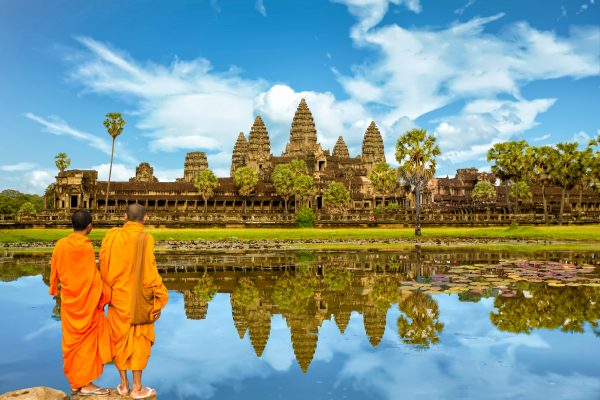
A few miles north of Siem Reap is the world-famous Angkor, site of the world’s largest Hindu temple complex and possibly the largest single religious relic monument in the world. Angkor Wat and the surrounding area is a UNESCO World Heritage Site and attracts hundreds of thousands of visitors annually. Early morning risers will witness the silent Buddhist monks gather at the water’s edge, casting shimmering reflections as the sun rises behind them.
Originally spread over at least a thousand square kilometres, the ruins of Angkor are a collection of over one thousand buildings constructed in the wild Cambodian jungle. The largest and most famous temple of all, Angkor Wat, was built in the early 12th century by King Suryavarman II as a shrine to Hindu deity Vishnu, but from the 14th century onwards it has been used as a Buddhist temple. Within the three kilometre moat, staggered rectangular galleries form the basis for the five peaks which represent Mount Meru, the home of the deities in Hindu mythology.
The design and construction was so advanced that Henri Mouhot, the French explorer who popularised the site through his travel notes in the mid-19th century, believed it had been built in the same era as Rome, as he found it difficult to believe the Khmers could have built such an advanced complex.
Discovering Laos
North of Cambodia lies the landlocked county of Laos. Settled since at least 1000 AD, Laos’ capital, Vientiane, is a small laid-back town on the banks of the Mekong River, and is the vibrant heart of the country. Vientiane’s whole population is a touch over 200,000, and monks often outnumber tourists in the city.
With Buddhism at the heart of the country, one of the main sights is Pha That Luang. Originally built in 1566, its central golden stupa rises an impressive 45 metres high. It’s not only Asian architecture you’ll find in Vientiane, with the Patouxai arch reminiscent of the French version L’Arc de Trimophe with a Laotian twist. The Gate of Triumph is dedicated to those who fought in the struggle for independence from the French, and is an enjoyable place to wander around the gardens and the interior of the vast structure.
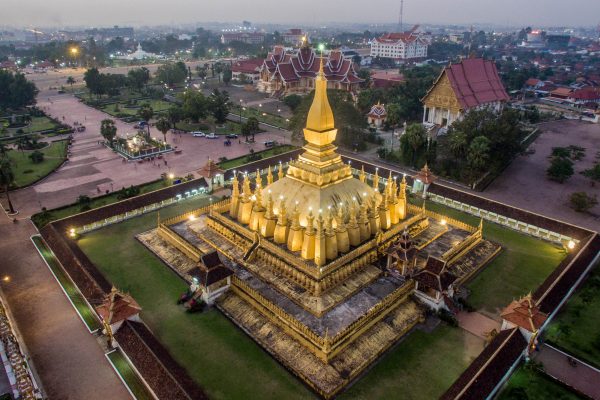
Heading north of Vientiane lies the UNESCO city of Luang Prabang. The city literally means ‘The Royal Buddha Image’, and was formerly the capital of an ancient sovereignty under the same name. The city is well known for its numerous temples and monasteries as each morning a sea of orange-robed monks from the various monasteries walk through the streets collecting alms.
One of the major landmarks in the city is a large, steep hill on which sits the Wat Chom Si Temple, however heading out of the city you’ll find natural sights well worth exploring like the Kuang Si falls, a 200ft cascade a few miles outside of Luang Prabang. The turquoise-blue pools are popular with those looking to spend a few hours walking along the trails around the falls, and are a welcome break from the chaos of the cities.
Travelling through Cambodia and Laos provides an insight into a quickly-forgotten yesteryear. The change in freedoms and prosperity has given the next generation a future their grandparents probably never thought possible. In this part of Indochina, the future looks bright, and in the case of Luang Prabang, it certainly looks orange.
Getting there
There are no direct flights to Cambodia from the UK. The best route is to travel to Bangkok (Thailand) or Ho Chi Minh (Vietnam) and take a regional flight to Siem Reap or Phnom Penh.
Best time to go
Although quite warm throughout the year, the coolest time is from November to March. The wet seasons vary between June to September.
